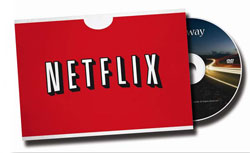
 According to NPD VideoWatch Digital tracking service, Netflix’s share of digital movie units, downloaded or streamed totaled 61% during Jan. and Feb. 2011. Comcast earned 8% and DirectTV, Time Warner Cable and Apple enjoyed a three-way tie with 4% each. The data for this study was gathered via online interviews with U.S. consumers age 13 and older conducted between Jan. and the third week of Feb. 2011. There were 10,618 completed surveys.
According to NPD VideoWatch Digital tracking service, Netflix’s share of digital movie units, downloaded or streamed totaled 61% during Jan. and Feb. 2011. Comcast earned 8% and DirectTV, Time Warner Cable and Apple enjoyed a three-way tie with 4% each. The data for this study was gathered via online interviews with U.S. consumers age 13 and older conducted between Jan. and the third week of Feb. 2011. There were 10,618 completed surveys.
“Sales of DVDs and Blu-ray Discs still drive most home-video revenue, but VOD and other digital options are now beginning to make inroads with consumers,” said Russ Crupnick, entertainment industry analyst for NPD. “Overwhelmingly, digital movie buyers do not believe physical discs are out of fashion, but their digital transactions were motivated by the immediate access and ease of acquisition provided by streaming and downloading digital video files.”
NPD also asked consumers to compare satisfaction from the four modes of digital-video acquisition: electronic sell-through (EST), Internet VOD (iVOD), cable VOD, and subscription streaming. EST services like iTunes were credited with having the most current releases, while Netflix was called “Best Shopping experience and value for price paid.”
 According to a recent Wrap.com Netflix discussion, “perhaps 5 million or more of its 20 million monthly subscribers are now using the streaming service instead of getting their DVDs in the mail. In the process Netflix saves hugely in its postage and handling charges.”
According to a recent Wrap.com Netflix discussion, “perhaps 5 million or more of its 20 million monthly subscribers are now using the streaming service instead of getting their DVDs in the mail. In the process Netflix saves hugely in its postage and handling charges.”
However, there are clouds on the horizon for this company that streams its content from the cloud. Netflix’s 3-year licensing contracts for the electronic transmission of both movies and TV programs will begin expiring in just 7 months. Because the streaming business is now viewed as a competitive challenge to more mature licensing areas such as cable and satellite, it is expected that Netflix will end up paying much higher rates going forward. This means that either prices for the service will rise or Netflix will need to add a large additional number of subscribers, or both. This impending crunch also comes at a time when other competitors such as Amazon, Apple, Facebook and Google are entering the space.

Category: Featured, Sales/Marketing
About the Author
David M. Ross has been covering Nashville's music industry for over 25 years. dross@musicrow.comView Author Profile


